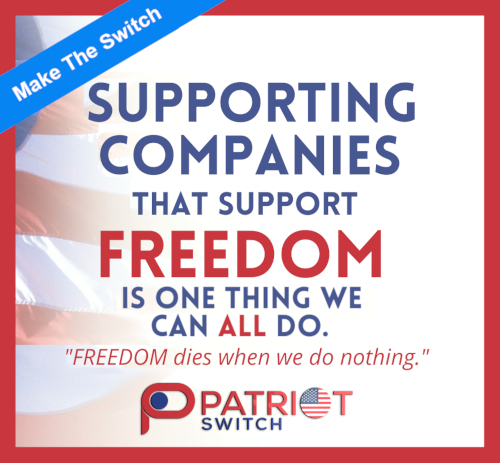It’s back to school this week for Florida students and many others across the country.
The first days and weeks of a new school year are always filled with anticipation, adjustments, transitions, and growth for parents and students. Yet, this school year’s “firsts” for an expanding pool of families also includes the first time that their children will have the resources and freedom to enroll in the school of their choice.
The short- and long-term consequences of these new opportunities aren’t just experienced within the four walls of a home or school building, or by the families now empowered to pursue them. The impact of education choice stretches across communities and economies, helping to unleash prosperity and growth that benefits everyone.
Since 2021, eight states have passed universal or near-universal school choice programs, affecting over 13 million students nationwide—a growth of over 4 million in just two years.
Florida’s universal choice program was passed by the Florida Legislature on March 23 and took effect July 1, making this back-to-school week the first experience for many parents newly eligible to draw down approximately $8,000 per year to spend toward their children’s educations.
To provide families an opportunity to pay for education costs ranging from tuition to school supplies, the legislation creates education savings account that may be used toward private school tuition, tutoring, or anything else under the approved legislative umbrella.
With no restriction on families that may participate, certain areas become more populated than others, shepherding an influx of economic vitality. With school choice comes increased competition, encouraging businesses—especially small business entrepreneurs and real estate investors—to transform their development and growth strategies to cater to emerging markets, as families relocate to take advantage of expanded educational options.
Prior to the COVID-19 pandemic, Homes.com introduced “School Scores” to its website, which allows potential buyers to access a school-ranking system based on letter grades ranging from A+ to D, calculated by state testing performance data available from public schools.
Indeed, businesses likewise consider tax rates, inflation, and supply and demand in deciding where to set up shop. They also consider access to high-performing schools for their employees, who place a high value on working close to quality schools for their children to attend.
Florida’s universal choice program has certainly set the national standard for how to respect families’ individual decisions about the schooling best for their children. But it’s also a model for other states looking to experience the economic boom that comes with incentivizing more people to “follow the money.”
Why does the economy benefit from school choice? Bartley Danielson, associate professor of finance and real estate at North Carolina State University, emphasizes that school choice fosters communitywide economic prosperity.
This allows families to remain in their dwellings, rather than feeling led to switch neighborhoods based on school districts. In turn, real estate becomes equally coveted across regions where school choice is implemented.
Virginia is an apt case study. As a state that offers little parent choice in education outside the public system, the Old Dominion has experienced rapid outward migration since the onset of COVID-19, which saw some schools there getting national attention for infamous mask mandates and increasingly progressive curriculum.
From fall 2019 to fall 2021, public schools in Virginia saw a collective loss of over 46,000 students. On the list of states with greatest population decline, Virginia is now tenth—joining the likes of California, New York, and much of the Northeast, all of which offer little to no educational options outside their public systems.
Meanwhile, Virginia’s neighbors of West Virginia, Tennessee, Kentucky, and North Carolina are all net positive for migration, as are the other proximal Southern states of South Carolina, Georgia, and Florida—with Tennessee, North Carolina, South Carolina, Georgia, and Florida being significantly so.
A feather in the cap of these rapidly growing states is the existence of steadily expanding school choice programs.
Beyond benefiting states’ economic livelihood, taxpayers across the states are also seeing savings as a result of these expanding programs. Out of 52 analyses on the fiscal impact of private school choice programs, 47 were found to generate overall savings for taxpayers. Another study in 2018 found that school choice programs generated $12.4 to $28.3 billion in tax savings.
Expanding education choice options as widely as possible isn’t just good for the students who enroll in the programs. These programs encourage economic growth and competition between states looking to attract and retain small businesses, job growth, stable families and thriving communities.
This year is just the beginning of realizing the potential—not just in our kids, but in our policy solutions.
Originally published by RealClear Wire
The Daily Signal publishes a variety of perspectives. Nothing written here is to be construed as representing the views of The Heritage Foundation.
Have an opinion about this article? To sound off, please email letters@DailySignal.com and we’ll consider publishing your edited remarks in our regular “We Hear You” feature. Remember to include the url or headline of the article plus your name and town and/or state.
The post The Economic Benefits of School Choice appeared first on The Daily Signal.
- The Sneaky Way Deep-State Bureaucrats Advocated Censorship of Americans in 2020 - November 13, 2023
- There Is No ‘Second America’ if This One Fails - November 13, 2023
- ‘Zero Appetite’ in Israel for Cease-Fire With Hamas, Embassy Official Says - November 13, 2023
JOIN US @NewRightNetwork on our Telegram, Twitter, Facebook Page and Groups, and other social media for instant news updates!
New Right Network depends on your support as a patriot-ran American news network. Donate now


